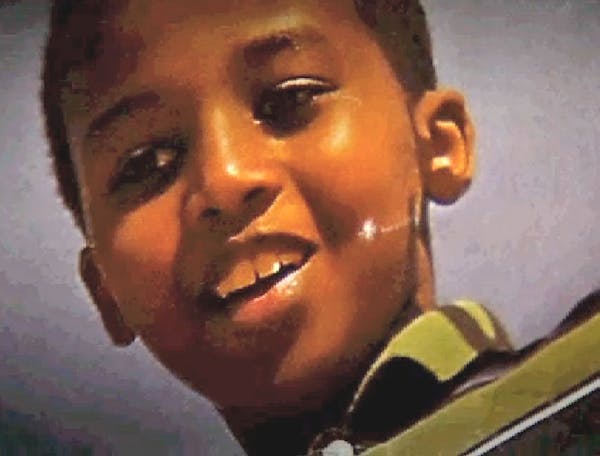The drowning of a St. Louis Park Middle School student has prompted Minnesota schools to scrutinize their widely varying pool safety policies in hopes of preventing a similar tragedy.
Abdullahi Charif, 12, was found floating in the deep end of the school's pool during a physical education class Thursday. He died two days later.
An attorney for the boy's family said he did not know how to swim and questioned how his drowning went unnoticed. On Tuesday, he pointed to a state Department of Health report that said no lifeguard was present at the time.
School administrators have said that the teacher supervising Charif's class was a certified water safety instructor. Such instructors typically teach swimming lessons. Lifeguard training involves rescues, first aid and cardiopulmonary resuscitation.
"Whether he was a water safety instructor or a certified lifeguard, he was acting as a lifeguard and should be held to the same standards," said Fred Pritzker, the Charifs' attorney.
Most Minnesota schools require that either a lifeguard or a certified water safety instructor be on duty when students are swimming.
But school policies on water safety issues vary across districts. Some are quite detailed. The Hopkins public schools, for example, prohibits instructors from opening a pool area unless they have access to a telephone and first-aid equipment.
Other policies are less specific about teachers' poolside responsibilities. And very few address the student-instructor ratio.
Pritzker has said there were about 30 children in Abdullahi's class, all under the eye of the single instructor. That class size does not appear to be unusual. St. Paul, one district that does address student-instructor ratio, recommends no more than 30 pupils in an aquatics class.
"You can have all the policies in the world on paper," said Rick Kaufman, a spokesman for the Bloomington School District, which has a detailed safety protocol for pool instructors. "What's critical is making sure your staff is supervising students at all times and [that] they are properly trained."
'It's a great danger'
The tragedy was not the first the St. Louis Park district has suffered in the past year. In May, two students from the district were killed in a landslide during a field trip at a St. Paul park.
The district has released very little information about Abdullahi's death, citing its ongoing investigation.
And that's been a point of contention for the boy's family and members of the Somali-American community to which they belong.
On Tuesday, however, Pritzker said communication between the district and family is improving. The district has agreed to let the family see the pool, which has been closed since the boy drowned, he said.
A Hennepin County health inspector's report shows the pool had low lights, that a first-aid kit was not up to code and that a lifeguard certificate was not displayed on the day Abdullahi drowned.
According to the Centers for Disease Control and Prevention in Atlanta, minority children are at the highest risk for drowning. Compounding the problem, many schools no longer offer swimming in physical education classes because of budget cuts.
"The YMCA and YWCA do what they can, but the need is just too great," said Hannah Lieder, director of Minneapolis Swims, a nonprofit that is leading efforts to renovate a community pool in the city's Phillips neighborhood. "Inner-city kids don't join clubs and they're not getting lessons through school," she said. "It's a great danger."
Policies under review
It is rare for a school to be the scene of a drowning tragedy. But it does happen.
In 1999, a 13-year-old St. Cloud student drowned in a school pool. His body was found 20 minutes after class ended. The family of Shuai Jiang sued the district and was awarded a $500,000 settlement.
That prompted the St. Cloud School District to purchase a state-of-the-art camera-based drowning-detection system.
School districts are now reacting to the St. Louis Park drowning by examining their own policies to see how they might be improved.
"We are reviewing our safety protocols in light of this tragedy," said Susan Brott, a spokeswoman for the Edina School District. "I think many schools are doing the same."
Jael McLemore, communications coordinator for Fridley's schools, said Abdullahi's death is a good reminder to school personnel that it is crucial to remain on high alert when it comes to protecting students.
"But you have to remember that accidents can happen no matter how careful you are," she said.
Kim McGuire • 612-673-4469

The story of Hercules the cat: Rescued in 2022, Target model in 2024

Minnesota State Patrol celebrates diverse new class of troopers

